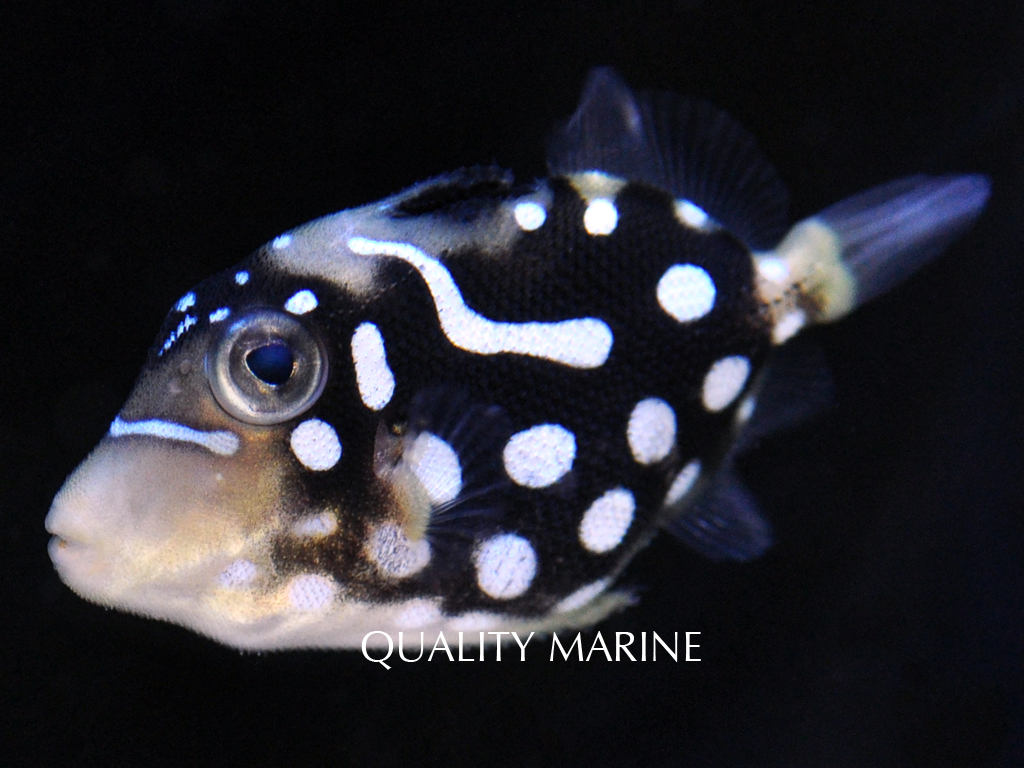There’s been quite a frenzy of captive bred fish in the marine aquarium world lately, but the new cultured clown triggerfish from Biota Marine in Palau are an exciting new group of fish altogether. Frank Baensch has raised crosshatch triggerfish in the past, but if there’s one species whose juvenile are extremely popular in the saltwater aquarium it’s clown triggerfish, Balistoides conspiccillum.
Tom Bowling, one of last year’s MACNA speakers talked about how he raises fish in Palau and of the large spawning aggregations that are well documented there. On top of culturing bluelined seabream and bumphead parrotfish, Tom’s latest breakthrough is in the captive culture of the clown triggerfish and we are happy to report that these cuties are already shipping from Quality Marine in Los Angeles.

We stopped by Quality Marine last week to get a firsthand look at the itty bitty clown triggers and they are truly adorable, and about half the size of the typical wild-caught specimens. At this size the juvenile clown triggers from Biota Marine are still developing their full black, white and yellow-trimmed tuxedo but already we can see some interesting variations.
Captive bred fish, be they angelfish or clownfish, typically show some greater degree of variability compared to their fully wild counterparts. In the case of theses cultured clown triggerfish, there’s several specimens that show a little bit of scribbling to their spots and we’re really excited to see how these patterns develop as the fish mature. Who knows? Maybe this clutch will throw out a few of the extremely rare “maze” clown triggerfish color morphs.


Press Release:
This is the first batch of Commercially Raised Clown Triggerfish available for sale in North America. These have been hatched in captivity and raised by Biota Marine Life Nursery in Palau. Quality Marine is the exclusive vendor for these fish in North America.
We are holding these fish individually, as Clown Triggerfish are known for aggressive behavior, especially as they get older. These fish were cultured and held together for quite a large portion of their lives and as a result may not be as aggressive as their wild counterparts. That being said, our interest lies in ensuring the best health of our stock as well as the quality of the specimen when delivered to our customer and so we intend not to “test” their temperaments.
We are feeding them Gamma mysis, enriched brine, krill, chopped prawn and other marine based diced meaty foods. They also get some more protein dense foods like pellets and gel, which they have taken greedily. Like most Triggers, they have seemingly bottomless stomachs, and do best on multiple feedings per day.



